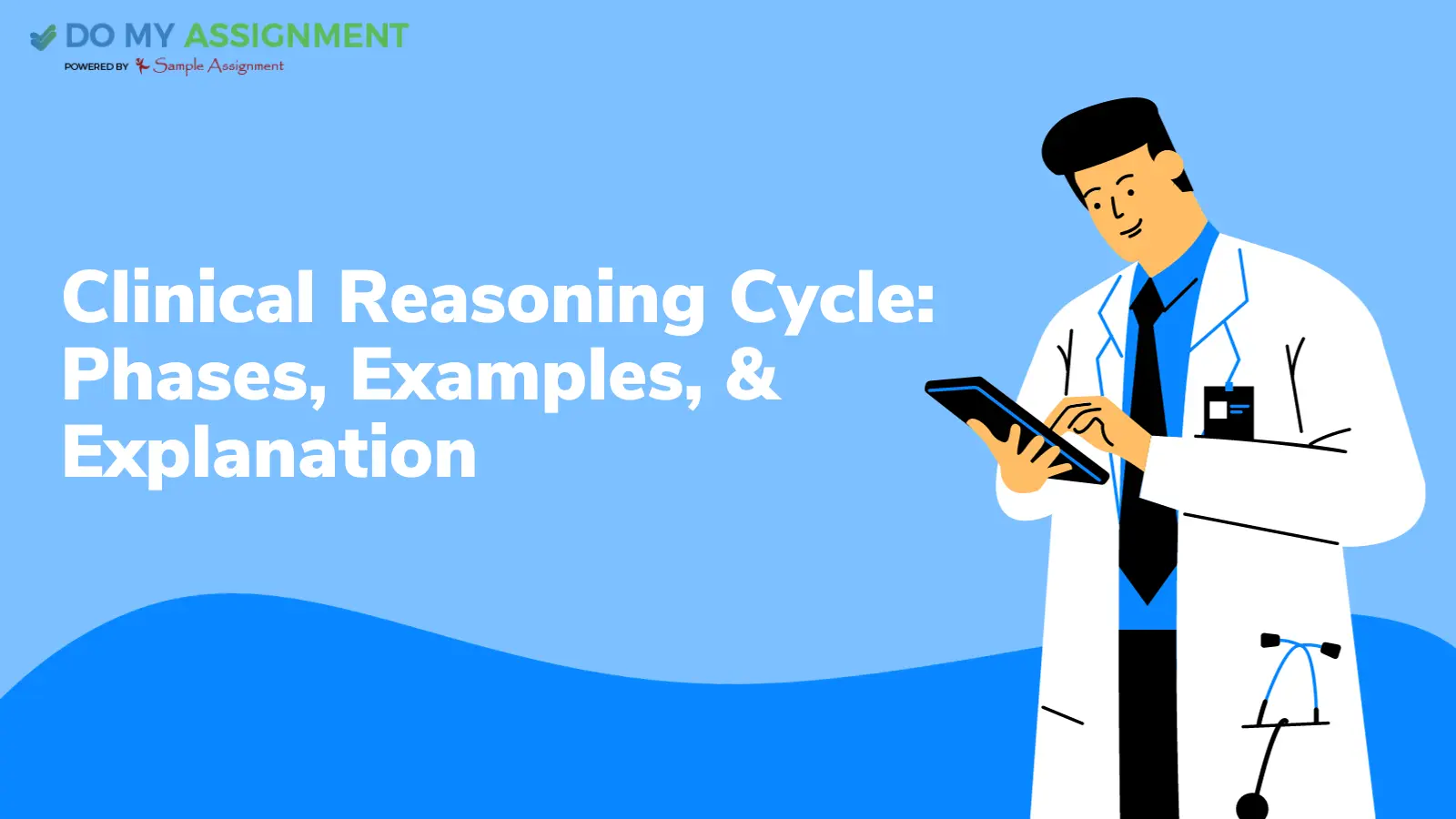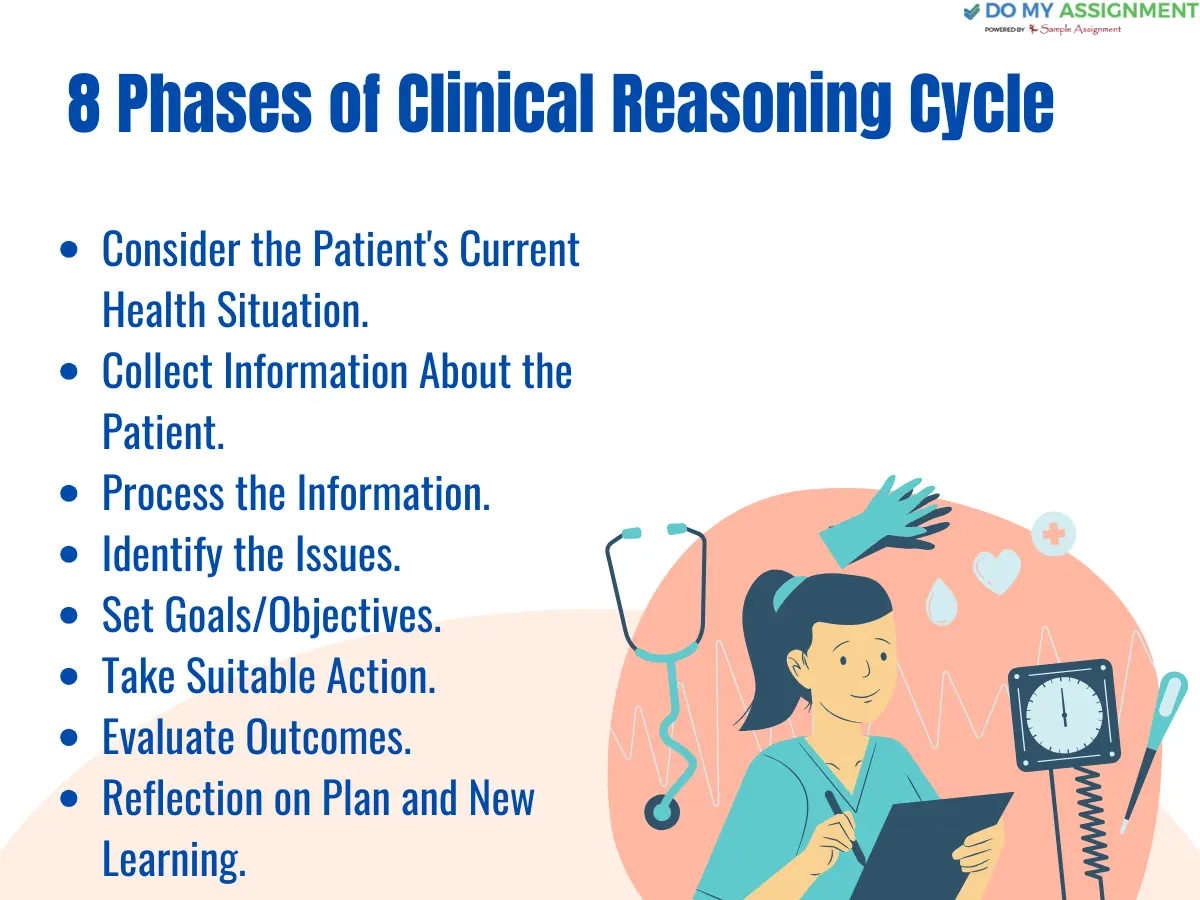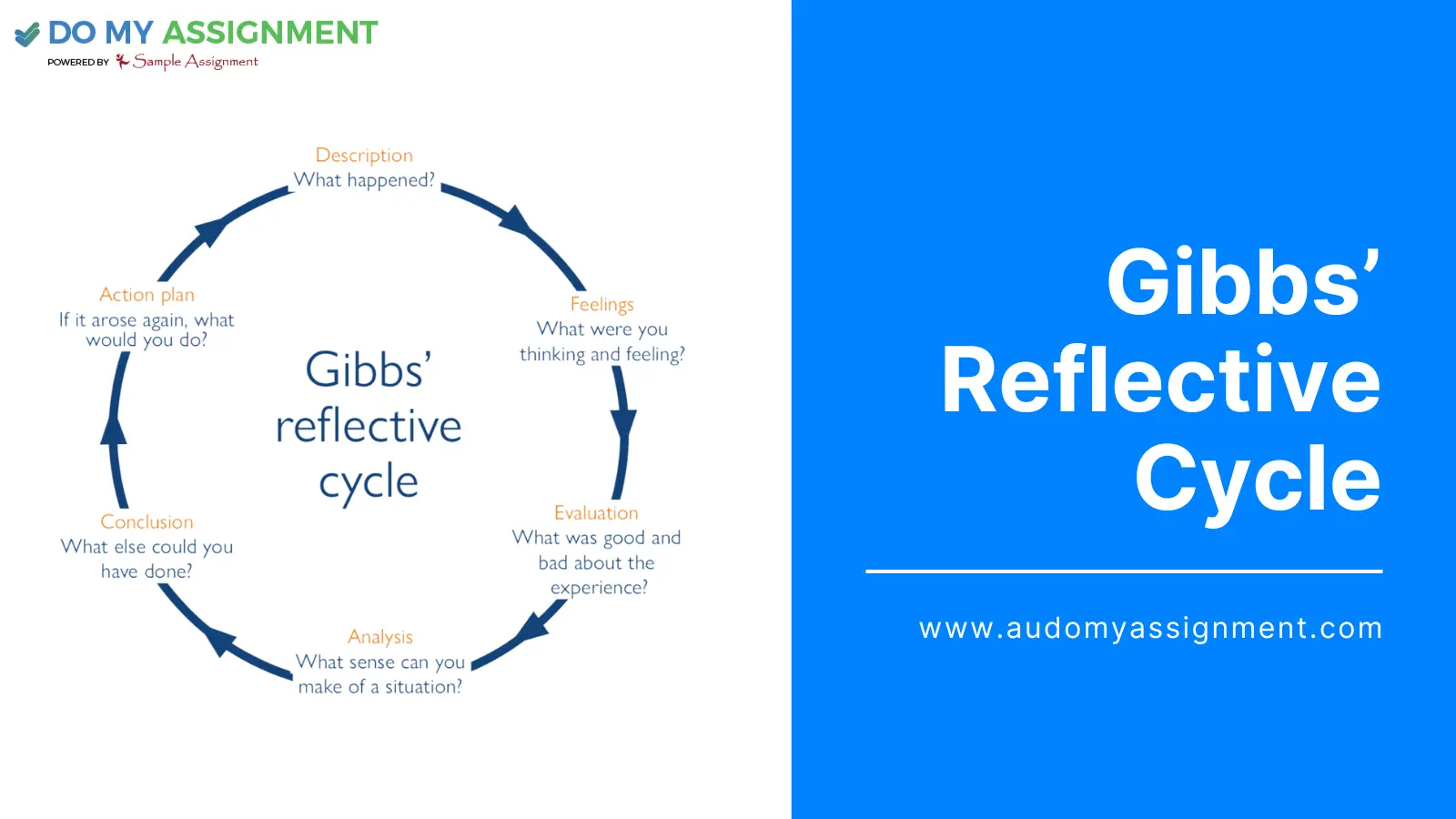What is Clinical Reasoning Cycle? Uncover the Details Here!

Highlights
The Clinical Reasoning Cycle, or CRC, is a common term used for a procedure in the healthcare industry. The reason why it is crucial is because healthcare practitioners make informed decisions with this methodology. So, the first question that comes to mind is, what is Clinical Reasoning Cycle? “In order to gain a better comprehension of the complexities involved in this fundamental healthcare concept, let’s begin by addressing the basic question.
Individuals who practice as healthcare professionals use a method of decision-making known as the Clinical Decision Making Cycle (CDMC) to gather and analyze patient information. Its work doesn’t end here. This procedure also forms clinical judgments and coordinates and executes patient care. All in all, this process serves as the basis for decision-making in healthcare, which can lead to improved patient outcomes and increased safety.
Such concepts are a bit complex, and students often get confused while writing assignments. They either fall short on time or can’t write quality content based on in-depth research. If you are also suffering through similar issues, they look no further than ‘Do My Assignment’.
We will elaborate on the components and significance of the CDMC in the following discussion, which will provide insight into its essential role in the healthcare sector.
What is the Clinical Reasoning Cycle?
The process of gathering information, identifying signs, and seeking a solution to the patient's problem is known as the Clinical Reasoning Cycle. Nurses and other similar medical personnel gather these data.
The nurses and medical specialists would carefully review the entire procedure, make educated guesses, make plans, and choose additional alternative therapies based on the case/data results.
The "disposition" is the foundation of the Clinical Reasoning Cycle as a whole. The results of this process are solely determined by the variables that impact it, including psychological, philosophical, and individual interpretations and attitudes toward various topics.
The most crucial item that nurses and medical professionals should concentrate on is this, as these records make it evident to them how to treat patients appropriately.
As the nurses maintain all patient data with the aid of the clinical reasoning cycle, the patient's care is considerably more successful.
It is quite an interesting procedure for the students pursuing the course. However, handling its assignments is somewhat difficult, especially for beginners. So, if you are facing such challenges, get online assignment help for it and save your time in a much more efficient manner. You can get assistance from our platform, as we have hired top-notch healthcare experts to provide students with the best quality support. Everything from the format to university guidelines is taken care of to help you submit assignments that outperform others’ work. So, let’s move further with meaningful insights into the clinical reasoning cycle.

Why is the Clinical Reasoning Cycle Vital?
Before creating an efficient care plan, clinical reasoning requires registered nurses to gain a thorough understanding of the patient's current circumstances.
The clinical reasoning process is sometimes applied to predict whether a patient will get better or worse. If the patient's health is at risk and a nurse professional's capacity for making clinical choices is limited.
The patient may experience adverse effects if the doctor is unable to diagnose the problem, develop a treatment strategy, or manage problems and health difficulties. If a particular health professional is knowledgeable about the clinical reasoning process, which is crucial for the patient's healing, then all of these issues are solvable.
Phases Of the Clinical Reasoning Cycle
Clinical reasoning is a process that is broken down into eight steps. However, it is important to remember that this is a continuum. Actually, until an accurate assessment of a patient's health status is made, one moves back and forth between steps or phases instead of always going from one to the next. Let’s go through the explanation of each phase. On completion of this section of the write-up, you will get a complete understanding of how each phrase has its own significance.
Taking into account the Patient's Present Situation
Once you get an idea about the ‘What is Clinical Reasoning Cycle,’ as a nurse, it is your responsibility to gather information from the patient in this step, taking into account his present state of health. Gather as much information as you can regarding the patient's illness and the cause of his hospital admission.
According to the clinical reasoning cycle nursing specialists at Instant Assignment Help Australia, this step must be structured and educational. A nurse might, for example, create a precise record of a patient's age, the room in which he was admitted, and the problem the patient was going through.
Analyze Prior Data
After collecting the patient's data, you review their past medical history, involvement in clinical operations or surgeries in the history, present treatment plan, existing course of therapy, and outcomes of tests conducted. The nurses must then establish their findings on their understanding of pharmacology and physiology.
Using the same example again, the nursing staff would also note any past medication administration history, symptoms, and any adverse effects, as well as the actions taken to record this information.
Go through the Data
This is a critical phase in the clinical reasoning cycle procedure. You process the details related to pathological and pharmacological practices after examining the patient's medical record and recording their existing state of health. After that, you should sort through the pertinent data, consider your options, and make whatever decisions you need to.
This stage involves processing the data that was collected. If a patient experiences any issues with blood loss, hypertension, or body temperature, the data will be reviewed again, and any adjustments will be noted.
Recognize The Issue
The nurse must carefully analyze the information in order to compile the diagnostic report for the patient's medical condition. It would only be at that point that you could determine the cause of the patient's issue.
Set Targets
Nurses should set certain goals for the diagnosis process based on the patient's health status. They ought to create the treatment process strategy within a set amount of time. Because it will be much simpler for you to accomplish those goals if you know what your next course of action is.
Take actions
In order to achieve a potential outcome for the patient's health, you must execute the treatment plan or the action steps for the patient at this phase after creating one. Most importantly, all members of the healthcare team need to be aware of the most recent information contained in the plan in order to accomplish the treatment goal for a specific patient.
Analysis
The nursing and healthcare industries need to assess the outcomes of the plan's implementation. It is best to use the metrics to estimate the usefulness of nursing care.
Following the suitable activity, the nursing staff will assess and record the results of their treatment programs.
Reflection
At this point in the clinical reasoning process, you should consider the new information you have gained from that specific instance, the actions you could have taken to improve the situation, and the areas you still need to improve.
If you are a student studying medicine or nursing, your instructors may ask you to turn in online assignment help on the clinical reasoning cycle in order to help you get better at what you do. Please get in touch with us right away if you need assistance composing your clinical reasoning projects for medical or nursing school. The subject matter experts on our team will help you finish your projects correctly, promptly, and affordably based on your demands.
T.L. Jones's Clinical Reasoning Method
Tracy Levett-Jones and colleagues (2009) state that the process is a way of working that enables nurses to gather hints for classifying and categorizing information, as well as comprehend the patient's current health condition or any potential problems. Plans can then be made and treatments put into action, and afterward, the process can be reviewed and lessons learned from. Nurses must acquire the ability to use clinical reasoning by gathering the necessary information and acting appropriately when it is suitable for the patient and for the right cause.
Conclusion
To sum it up, the Clinical Reasoning Cycle gives new views on a systematic and important procedure that forms the basis of medical practice. Moreover, this flexible framework helps medical practitioners navigate the intricacies of patient care. It includes everything from initial assessment through diagnosis, planning, and successful intervention execution. Using this stepwise procedure, clinicians can ensure that their choices are well-thought-out, supported by evidence, and patient-centered.
In addition, the Clinical Reasoning Cycle cultivates an environment of ongoing education and development. Not just this, it also empowers medical professionals to adjust to changing patient requirements and the rapid advancement of medical knowledge.
The Clinical Reasoning Cycle is a useful tool for anybody navigating the complexities of healthcare decision-making. Whether they are seasoned healthcare professionals or students just starting their careers in medicine, its application can ultimately result in better patient outcomes and improved healthcare practices.
So, if you are pursuing any medical-centric course, you get help for your assignments and assessments from ‘Do My Assignment.’ Our skilled professional academic writers are committed to offering top-notch support to university students.
Nick Johnson
Nick is a multi-faceted individual with diverse interests. I love teaching young students through coaching or writing who always gathered praise for a sharp calculative mind. I own a positive outlook towards life and also give motivational speeches for young kids and college students.







